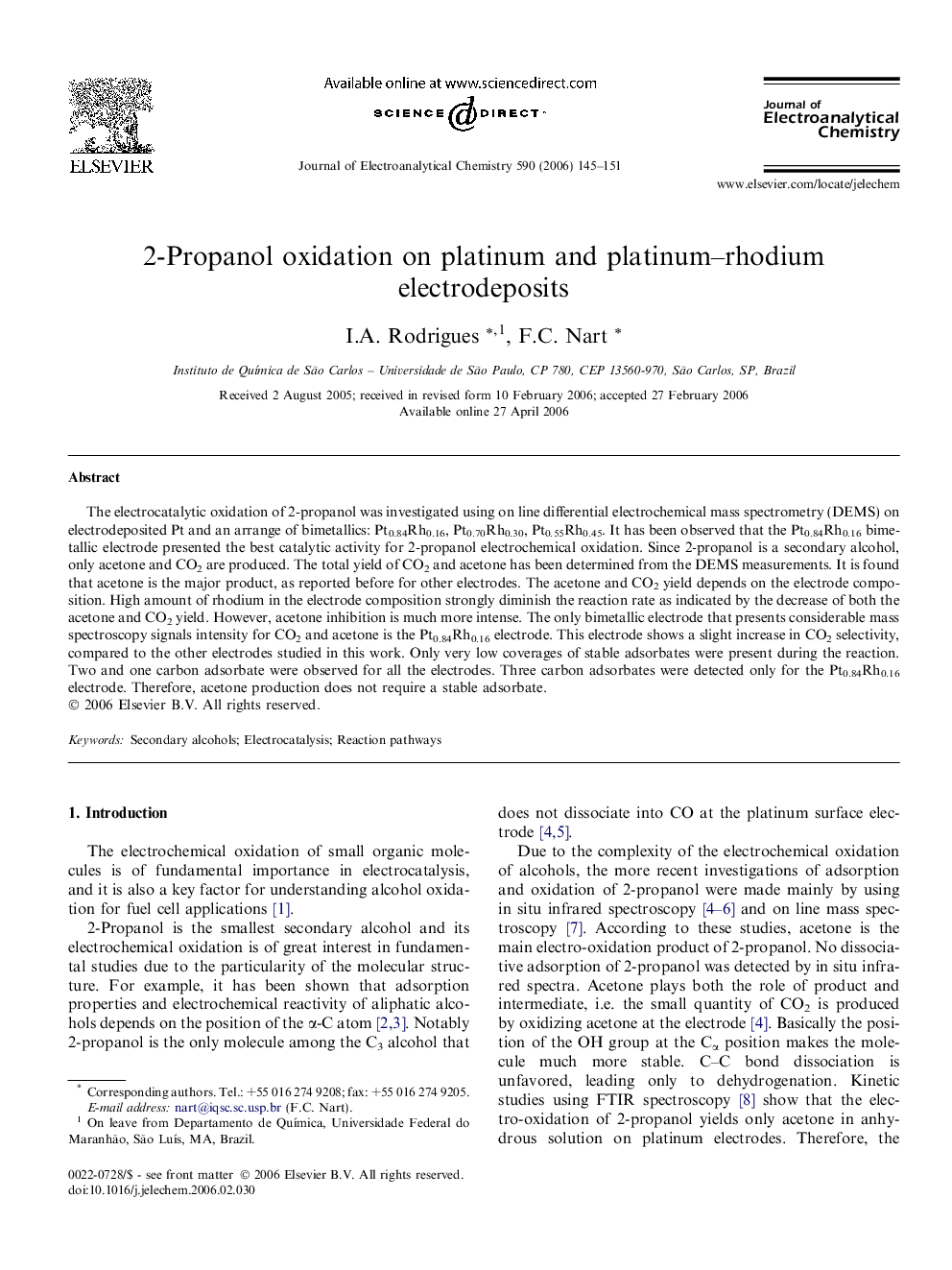| Article ID | Journal | Published Year | Pages | File Type |
|---|---|---|---|---|
| 221280 | Journal of Electroanalytical Chemistry | 2006 | 7 Pages |
The electrocatalytic oxidation of 2-propanol was investigated using on line differential electrochemical mass spectrometry (DEMS) on electrodeposited Pt and an arrange of bimetallics: Pt0.84Rh0.16, Pt0.70Rh0.30, Pt0.55Rh0.45. It has been observed that the Pt0.84Rh0.16 bimetallic electrode presented the best catalytic activity for 2-propanol electrochemical oxidation. Since 2-propanol is a secondary alcohol, only acetone and CO2 are produced. The total yield of CO2 and acetone has been determined from the DEMS measurements. It is found that acetone is the major product, as reported before for other electrodes. The acetone and CO2 yield depends on the electrode composition. High amount of rhodium in the electrode composition strongly diminish the reaction rate as indicated by the decrease of both the acetone and CO2 yield. However, acetone inhibition is much more intense. The only bimetallic electrode that presents considerable mass spectroscopy signals intensity for CO2 and acetone is the Pt0.84Rh0.16 electrode. This electrode shows a slight increase in CO2 selectivity, compared to the other electrodes studied in this work. Only very low coverages of stable adsorbates were present during the reaction. Two and one carbon adsorbate were observed for all the electrodes. Three carbon adsorbates were detected only for the Pt0.84Rh0.16 electrode. Therefore, acetone production does not require a stable adsorbate.
